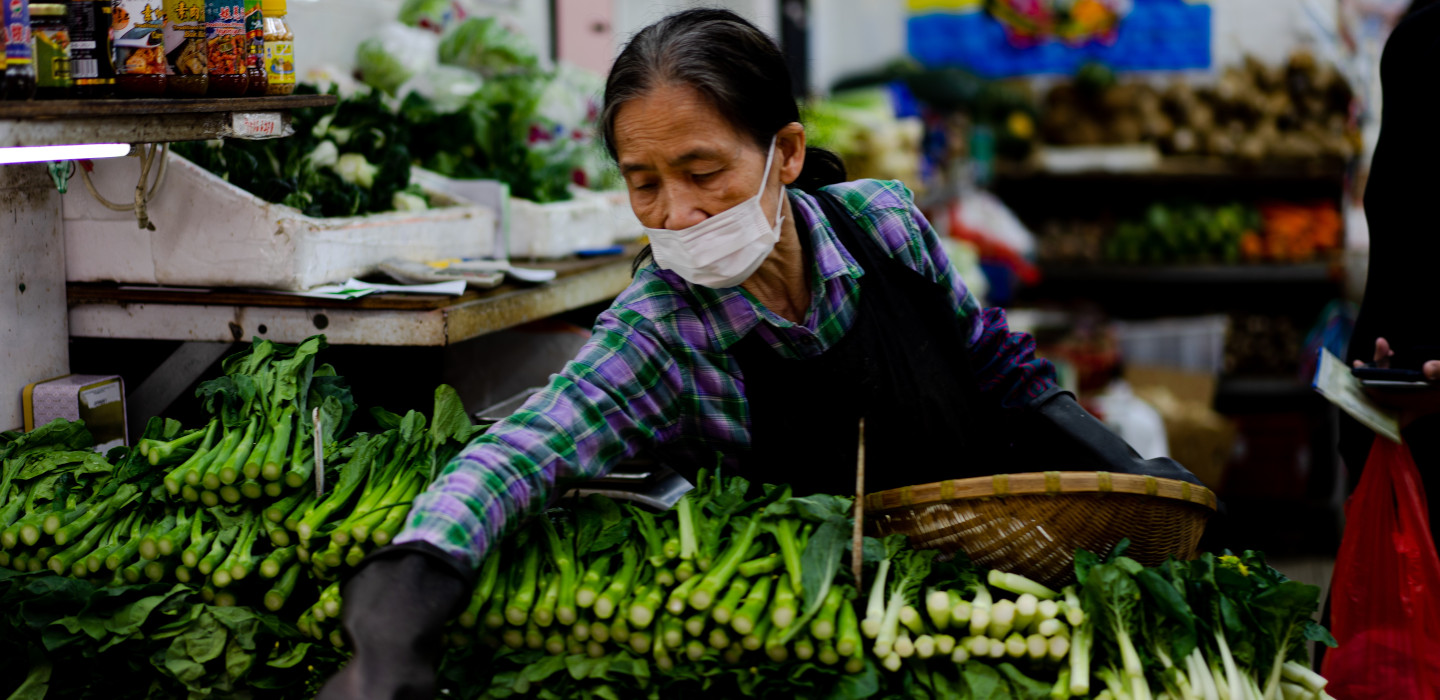Protecting health and protecting livelihoods: a delicate balance in the era of COVID-19
IFAD Asset Request Portlet
Asset Publisher
Protecting health and protecting livelihoods: a delicate balance in the era of COVID-19
Estimated reading time: 5 minutes
Development encompasses a wide range of actions, from short-term emergency relief to mid- and long-term infrastructure and resilience building that enables people, communities and nations to thrive even after projects have ended. The balance between these interventions is delicate at the best of times. But what happens when an unprecedented crisis like the coronavirus pandemic strikes?
Around the world, developed and developing countries are coming to grips with the fact that lockdown measures, though necessary to halt the spread of COVID-19, are nevertheless leading to job losses. This is a particular concern for the world’s poorest people, three quarters of whom live in the rural areas of developing countries and depend on agriculture for their livelihoods.
Competitive markets as the pathway to sustainable resilience
Although some smallholder farmers operate as businesses, building financial productivity and increasing their incomes and assets, most are subsistence-based producers. Typically they are poor and vulnerable, and have low productivity. They lack access to improved technologies, to finance, inputs, and services, as well as to markets.
Transparent, competitive and well-performing markets create a healthy and viable incentive system that encourages these enterprises to adopt productive practices. Competition also pushes farmers to enhance their efficiency and product quality while reducing production costs, which helps ensure consumers get access to the goods and services they want at competitive quality and reasonable prices. Ultimately, robust, competitive business environments lead to an increase in profit margins and growth for smallholder agri-businesses.
This is why public investment in the agricultural sector is a catalytic factor, helping equip small-scale producers with the means to increase productivity and incomes and build resilience. Farmers themselves must also invest in their production – but investment requires access to credit, and credit means repayment. Hence, for smallholder farmers to be able to generate sufficient income to make the investments that will allow them to achieve greater resilience, access to markets is fundamental. No markets, no sales; no sales, no income; no income, no repayment – and no food security either, in many cases.
In times of crisis, governments and development partners often prioritize emergency actions, including humanitarian assistance. This is understandable, especially when governments are dealing with an invisible and previously unknown threat such as COVID-19. Yet, actions such as these can ultimately limit the potential for agricultural development at scale. Ironically, they can have the unintended effect of reversing the impact of investments already made to help farmers become more productive and escape poverty. They may even escalate food insecurity.
For example, interventions that focus on providing private goods (food, inputs, etc.) can distort markets in an unpredictable way. They tend to crowd out the private sector in these markets, making it impossible for more efficient actors throughout the value chain to invest and engage. Cash transfers, on the other hand, enable consumers to continue spending, injecting vital liquidity into commodity markets to which farmers supply their output. This kind of support for local value chain actors adds resilience at many levels.
Coordination among development agencies is always important. But now more than ever, the development community needs to get coordination right. It is critical to ensure that all interventions are well targeted. Aid needs to reach those who are in danger of starvation, but without depressing commodity markets so that farmers’ incomes crash. Pathways of disease transmission need to be blocked, but without halting the flow of food to markets, so that crops do not rot unsold while populations starve – and while small farmers are pushed deeper into poverty.
The nexus between humanitarian aid and development
In agricultural contexts, resilience is the capacity to cope with events that lead to a significant reduction in output. This could mean weather extremes (floods, droughts, cyclones), the ongoing locust invasion, or the COVID-19 pandemic.
The most effective way to enhance small-scale producers’ resilience is by increasing their agricultural productivity. Governments and the international community regularly commit to action and investment to strengthen the resilience of African farmers, often responding to concerns about climate change, conflict and national food security. However, in many cases, a gap has opened between quantity and quality – in other words, increases in agricultural spending do not always address the actual needs of farmers or the challenges facing sustainable agricultural development.
The starting point for any development intervention aiming for a real and sustainable impact on smallholder livelihoods should be the recognition that farming can be a lucrative business. Any farm household, no matter how small or deprived, is first and foremost a business that invests into its seasonal activities, with land, with labor, and – when possible – with money. Governments and their development partners should recognize that in making their investment and contribution to the national economies, rural households are also carrying the entire risk for their investment. Hence, policies and investments should focus on helping these households enhance their productivity and resilience.
To build resilience, farmers need effective and profitable linkages to markets; well-functioning public goods; strengthened capacity to make better, informed choices; facilitated dialogue within the value chains; and strong leadership in their farmers’ organizations or cooperatives. Within such an enabling framework, they can use their own resources and assets to achieve higher productivity, generate greater profits and build prosperity.
Farmers must not be allowed to slip back into the subsistence trap as a result of the current COVID-19 crisis. Having invested in farming as a business, it is important to now help farmers and their local business partners stay in business, even as we take action to help populations as a whole weather the pandemic.
Ensuring continued access to transparent, competitive markets is key to maintaining farmers’ productivity, as well as the momentum gained in combatting rural poverty and food insecurity in recent years. Organizations working in the nexus of humanitarian aid and development can maintain the supply and demand market mechanism, even as emergency relief is delivered where it is most needed. For example, emergency response cash transfers could be provided through mobile banking and similar channels. And to the extent possible, food required for emergency supplies should be sourced from smallholder farmers who have the capacity to supply.
Increasingly, governments are signaling that a food crisis is looming. Anecdotal evidence already suggests that in several countries, increased food insecurity could turn out to be a bigger crisis than the pandemic itself. Protecting the livelihoods of farmers today will safeguard the availability of healthy, affordable food options not just now, but also once the pandemic has passed. By working together to coordinate actions and make the right investments, we can ensure post–COVID-19 resilience among rural producers.
Learn more about IFAD’s response to COVID-19.
Publication date: 27 May 2020